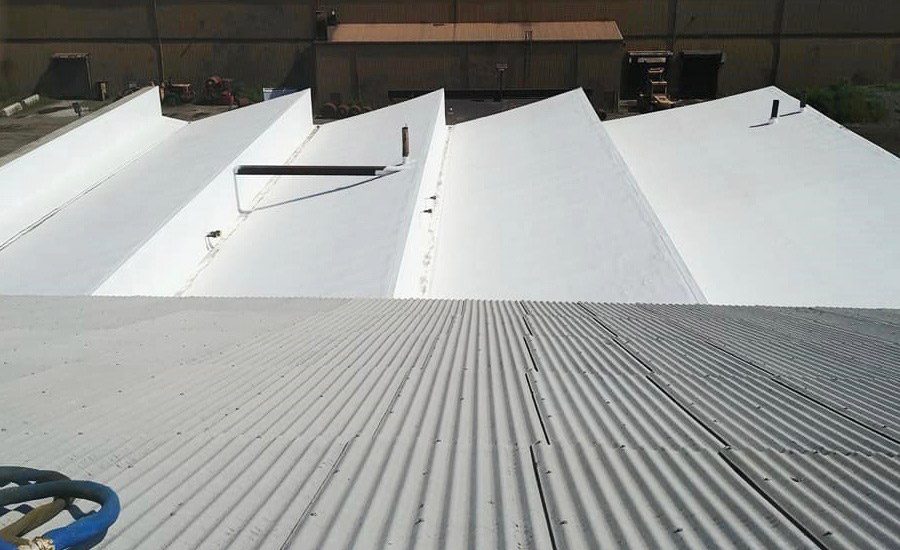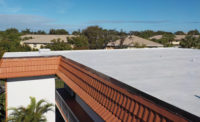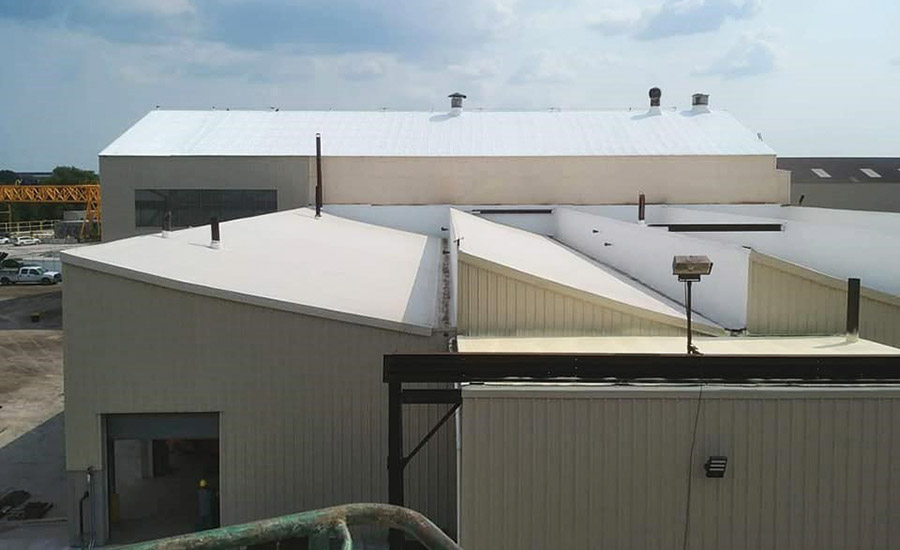Case Study: Tricky Michigan Roof Receives New Life With Spray Foam
Spray Foam Experts Exhibit Resiliency on Michigan Commercial Retrofit

Spray Tight Foam Insulators selected Icynene-Lapolla’s high-performance, closed-cell system to provide both waterproofing and thermal insulation to this manufacturing facility in River Rouge, Mich. Weather resiliency was a major factor in the three-month project in a region where extreme cold, wind and rain are a given, and often relentless. Photos courtesy of Icynene-Lapolla.

Spray Tight Foam Insulators selected Icynene-Lapolla’s high-performance, closed-cell system to provide both waterproofing and thermal insulation to this manufacturing facility in River Rouge, Mich. Weather resiliency was a major factor in the three-month project in a region where extreme cold, wind and rain are a given, and often relentless. Photos courtesy of Icynene-Lapolla.

Spray Tight Foam Insulators selected Icynene-Lapolla’s high-performance, closed-cell system to provide both waterproofing and thermal insulation to this manufacturing facility in River Rouge, Mich. Weather resiliency was a major factor in the three-month project in a region where extreme cold, wind and rain are a given, and often relentless. Photos courtesy of Icynene-Lapolla.



Spray Tight Foam Insulators, a respected regional spray foam contractor, was in the process of installing spray polyurethane foam insulation throughout the interiors of a commercial facility in River Rouge, Mich. After applying 80,000 square feet of two-inch spray foam insulation with a DC 315 thermal barrier to the facility, the owner and occupier, who had been contemplating a major roof retrofit, decided on spray polyurethane foam as the replacement system.
The facility serves as International Precast Solutions’ (IPS) major manufacturing plant in the United States, producing high-quality architectural precast solutions. The facility’s existing roof showed major age-related issues, as well as weather-instigated leaking and delamination. The three-decade-old EPDM system needed to be addressed immediately; however, the retrofit would prove challenging.
“The owner selected spray foam over EPDM or TPO because they preferred a seamless, monolithic roofing system for its durability, insulating qualities and performance,” said Eric Qualls, founder of Spray Tight Foam Insulators and a Spray Polyurethane Foam Alliance (SPFA) PCP master installer. “International Precast Solutions understood that a facility with spray foam applied as both insulation and roofing would better seal the structure and greatly enhance the overall energy savings. Ultimately, the spray foam roof would complement and work well with the spray foam insulation.”
Spray Tight Foam Insulators selected Lapolla FOAM-LOK 2800-4G, manufactured by Icynene-Lapolla, for the project. The high-performance, closed-cell system provides both waterproofing and thermal insulation to the facility, creating a seamless membrane with high R value and resistance to wind conditions. The material is notable for being the very first spray foam roofing system brought to market with a blowing agent based on HFO technology. It remains one of the few available today. The HFO technology offers exceptional environmental benefits including the elimination of ozone depletion potential (ODP) and the dramatic reduction of global warming potential (less than one), as compared to older spray foam systems.
Lapolla FOAM-LOK 2000-4G, a closed cell energy efficient spray foam, was also installed in the facility by the Spray Tight team as insulation. The material was also the first in its class to leverage HFO technology, offering the same benefits as its sister roofing spray foam system.
Weather resiliency was in fact a major priority, as well as energy performance. River Rouge sits in a region where extreme cold, wind and rain are often present and relentless, which had greatly influenced the facility’s past energy consumption and bills. Keeping the facility comfortable and operational for the workers inside had been expensive to date.
“Our facility spans over 350,000 square feet of workable space and, with it being so old, there had been many variations of roofs adopted throughout the years from sloped to flat with TPO, modified bitumen, conventional built-up roofing, as well as exposed metal,” said Renzo Collavino, senior vice president of IPS.
Collavino indicates IPS wanted “an air-tight solution to control high energy bills, an insulator capable of increasing R-value, and a seal that would encapsulate and fix all the hard-to-find leaks.”
The retrofit installation posed numerous challenges to the Spray Tight team. The 60-foot and higher roof features steep sloped roof surfaces and numerous valleys that form a dramatic sawtooth pattern. Spray foam installation is difficult and dangerous on this type of surface structure and the team needed to stop roof leaks within the deep valleys, which at the start of the project were in a deep state of distress. Re-sheeting was required before the FOAM-LOK spray foam could be installed. Extra foam at four- to six-inch thickness was applied in the valleys to strengthen them and to better protect from leaks.
High wind conditions on many days posed safety issues. Installation was halted numerous times due to wind and rain. The crew wore harnesses and were tied off with safety rope at all times to prevent unnecessary accidents. Wind conditions were also monitored for overspray concerns.
IPS also continued its regular ongoing operations inside the structure during installation, which required additional planning and safety considerations.
Concrete workers were present inside the facility throughout the retrofit process. Areas were designated for parking, smoking, and in-and-out access for the facility. The presence of concrete dust, from operations inside, was also closely monitored. A diligent dust control process, along with power washing the roof several times, ensured the spray foam and the coating — GE Enduris, a high solid silicone restoration system that provides added energy efficiency and protects from UV and weather — were applied to clean, dustless surfaces.
Despite the challenges and extreme weather, project completion was only delayed three weeks. Because IPS was able to continue its own operations inside the facility, the delay did not negatively impact their bottom line.
In recognition of Spray Tight Foam Insulators’ best practices and superb professionalism in the retrofit of the IPS facility, the project was a finalist for the SPFA’s Annual 2020 Excellence Awards in the “Spray Foam Roof Greater than 40,000 square feet” category.
Spray Tight Foam Insulator’s team on the project included Eric Qualls, Kevin McGinty, Mike Lang, Nick Lear, Tim Cocker, Charlie Moonyham and James Hudson. Spray Tight is located in Metamora, Mich. and has been applying spray polyurethane foam roofing and insulation for 20 years.
Looking for a reprint of this article?
From high-res PDFs to custom plaques, order your copy today!









